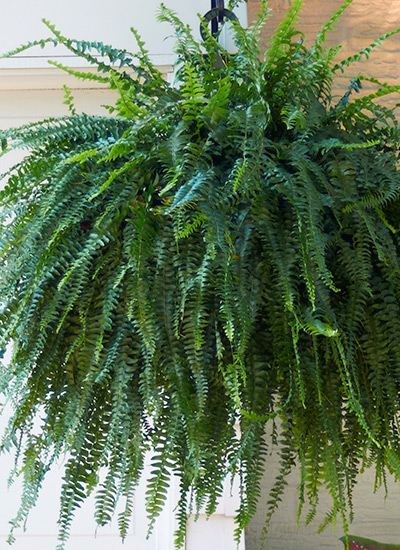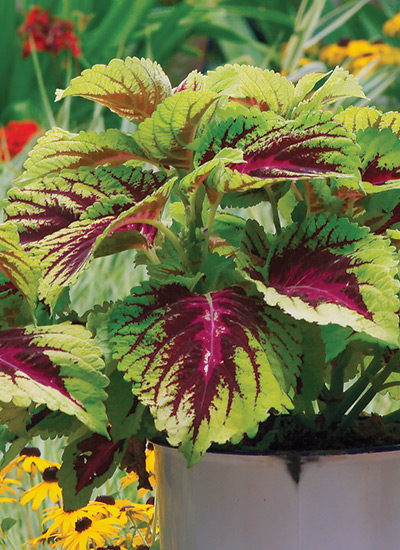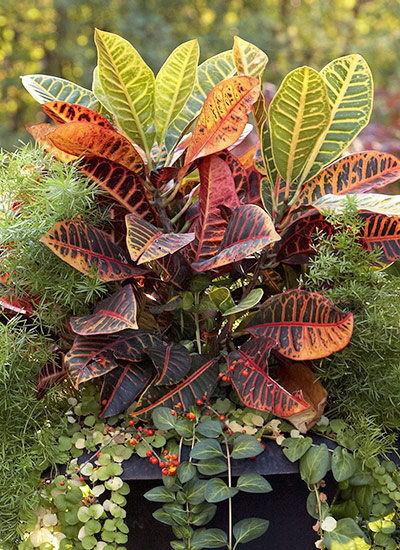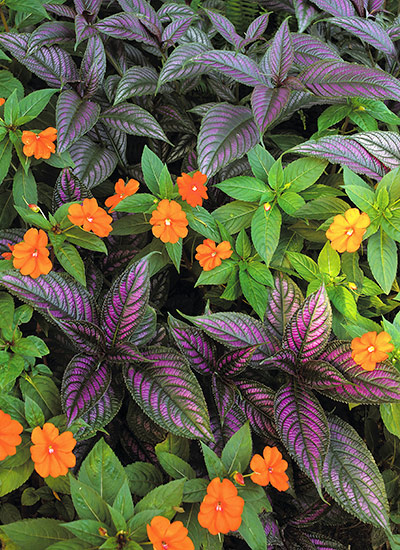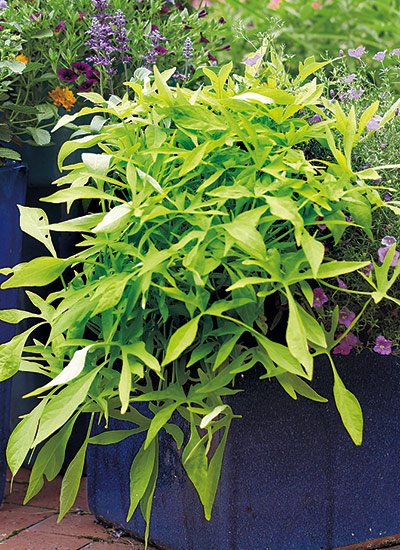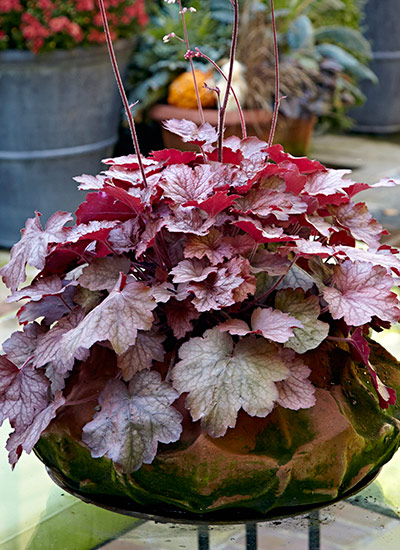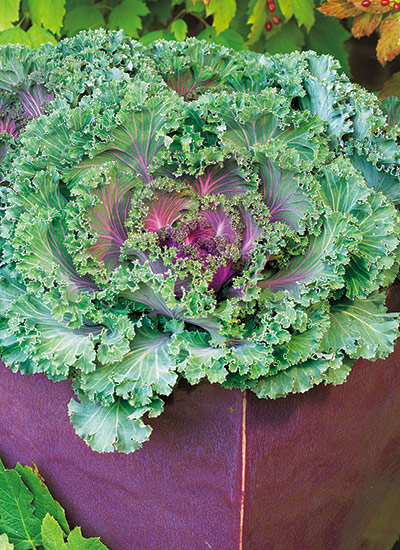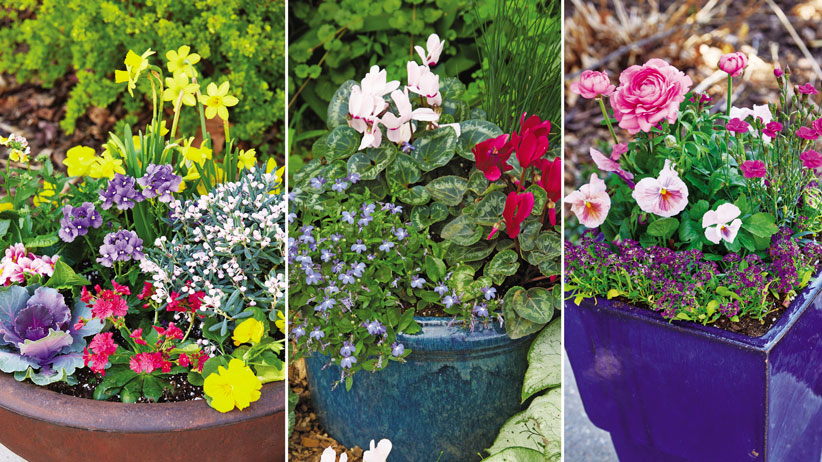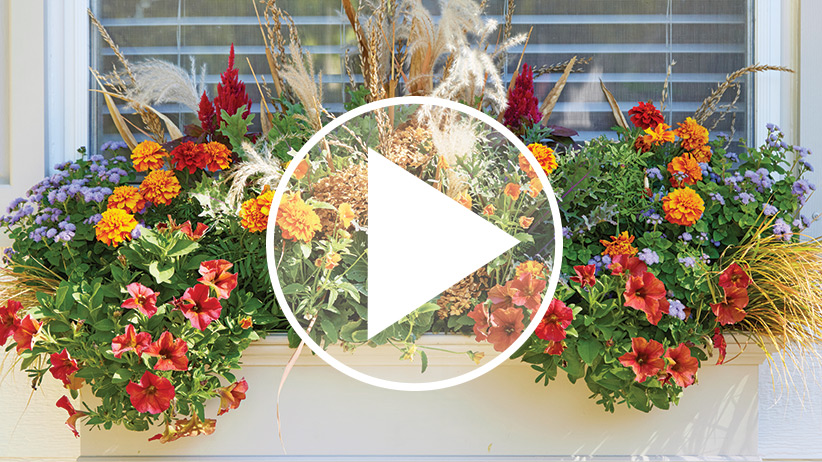
Love those leaves!
Plants can’t survive without leaves — they manufacture food. But leaves don’t have to be simply utilitarian; they can be star performers, too. All in all, great foliage can keep your garden interesting and colorful much longer than almost any flower. In truth, they are the workhorses of a container combo. (In truth, of any garden combo... just check out the gorgeous options in this beautiful book, Fine Foliage: Elegant Plant Combinations for Garden and Container.) Which foliage plants will work best in your containers?
A neutral green foliage, like Boston fern, can weave a diverse bunch of flower colors and shapes together into one stunning container. Or choose a plant with vivid leaves, such as a coleus, and make it the centerpiece of a combo with pale pastel or white flowers. Maybe your color scheme didn’t come out the way you expected and clashes with the container. A cascade of foliage can disguise the pot so it doesn’t show as much. Better yet, just embrace foliage and try a container with leaves only. Make it interesting by mixing up the textures and colors. You’ll never miss the flowers!
You Might Also Like:
No-Fail Formula for Designing Beautiful Container Gardens
Garden Gate Container Challenge
Colorful Windowbox Planting Ideas



